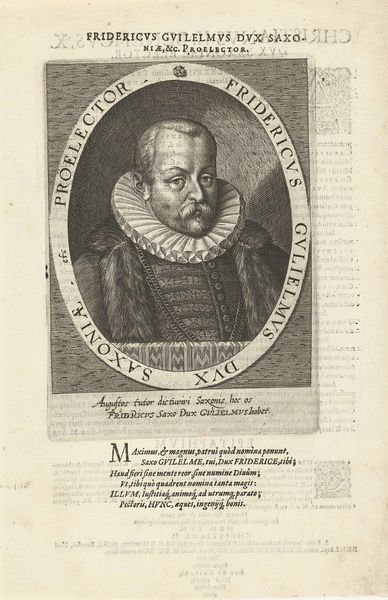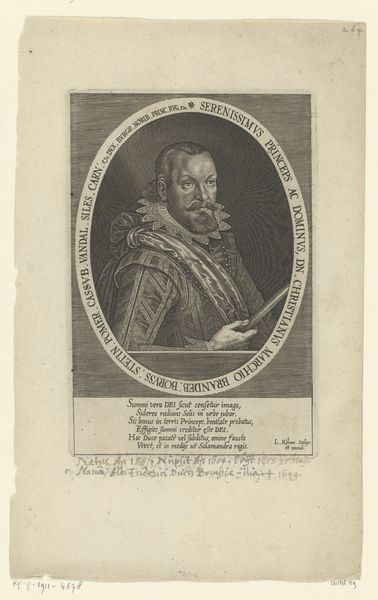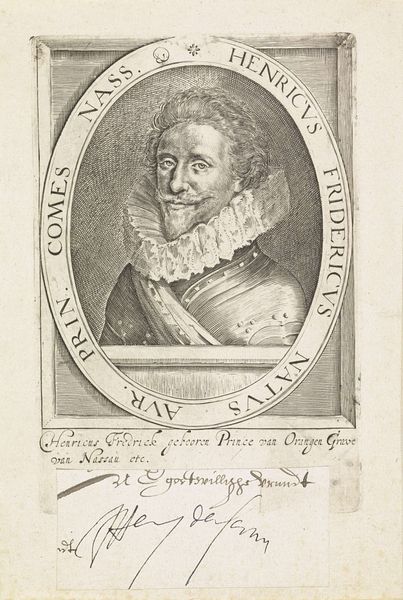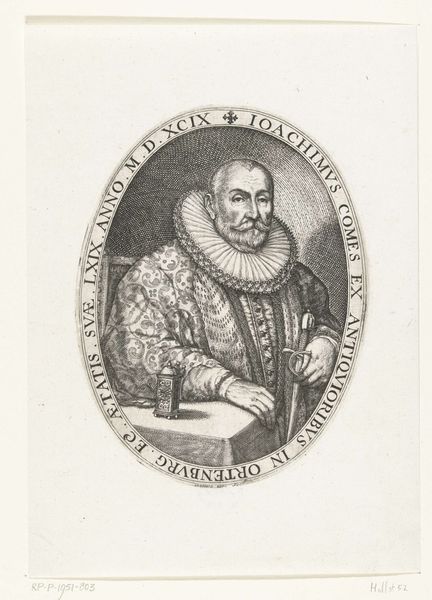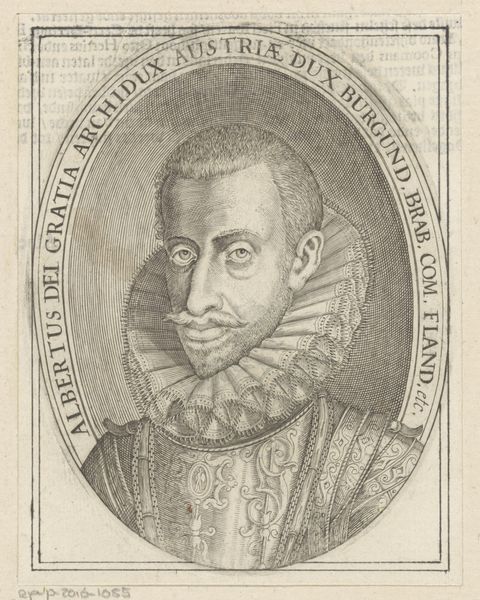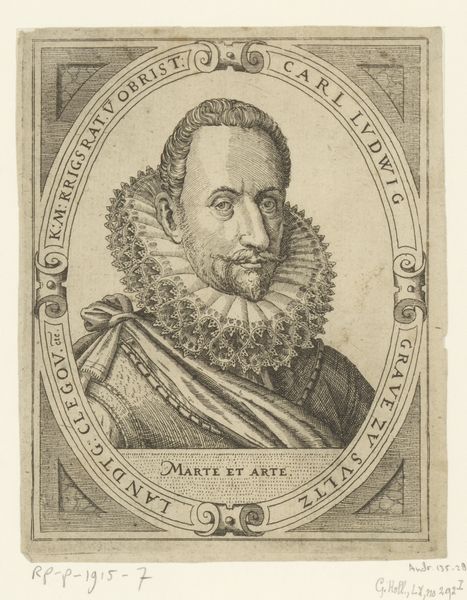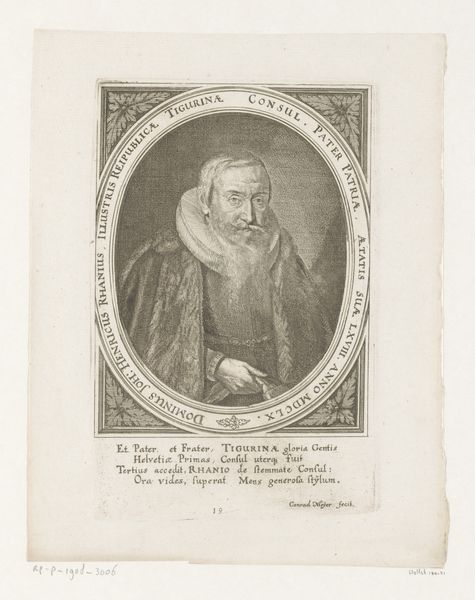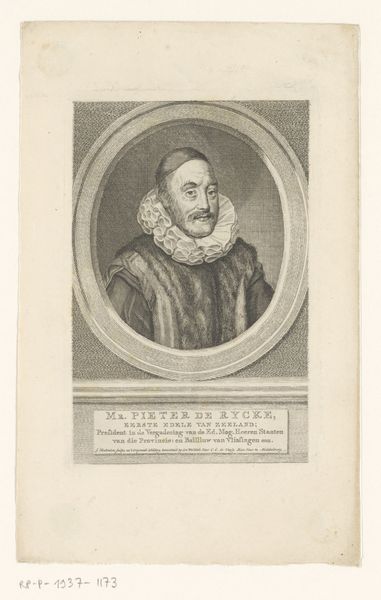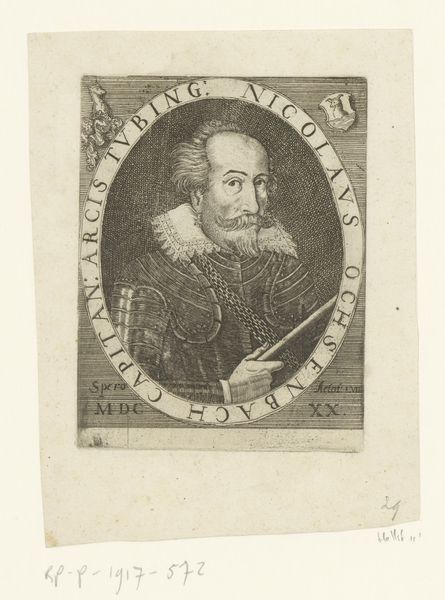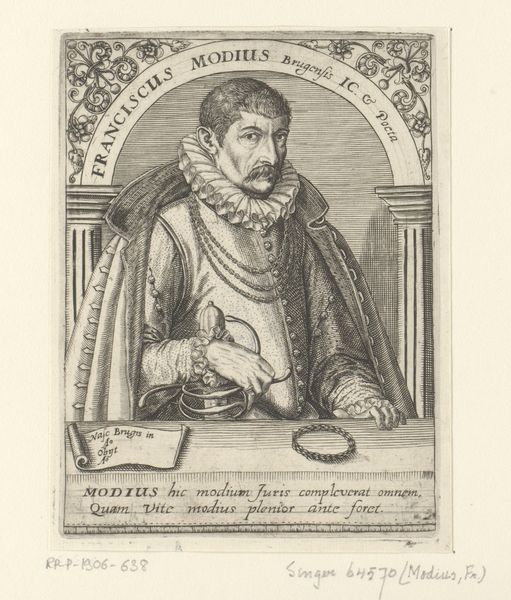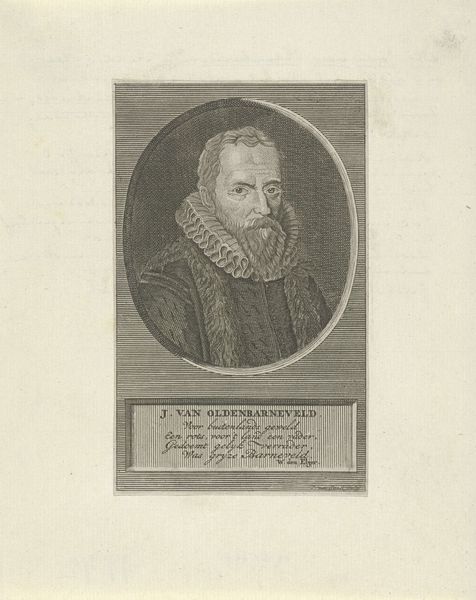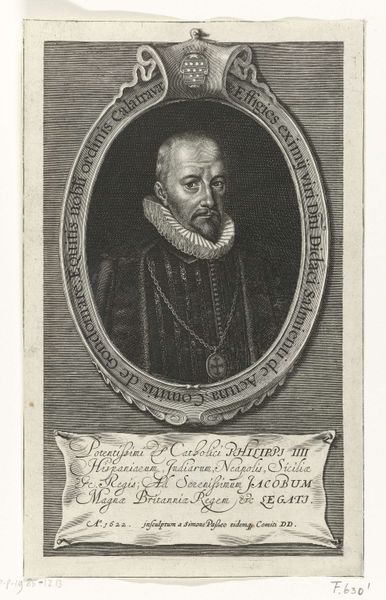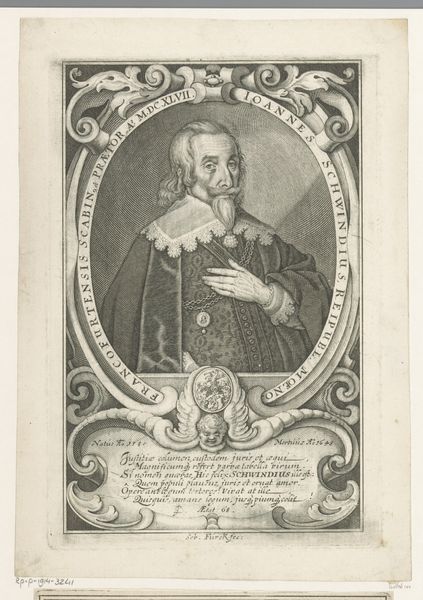
print, engraving
#
portrait
#
baroque
# print
#
history-painting
#
engraving
Dimensions: height 142 mm, width 106 mm
Copyright: Rijks Museum: Open Domain
Curator: Editor: Okay, here we have a 17th-century engraving, "Portret van Willem Lodewijk, graaf van Nassau-Dillenburg," currently held at the Rijksmuseum. It's a Baroque portrait, and it strikes me as rather formal and austere. What draws your attention in this print? Curator: Considering the materiality of printmaking during this era reveals intriguing socio-economic implications. Engravings such as these provided relatively accessible portraits that could be widely distributed and consumed. It is a departure from paintings reserved for elite members. How might this accessibility of portraits impact class structures? Editor: I guess it meant a broader audience could participate in constructing and circulating images of power, even if they couldn't afford a painted portrait. Were prints seen as somehow "lesser" art compared to painting at the time, because they could be more easily made, like some form of mass production? Curator: Precisely. The value associated with uniqueness and the hand of the artist – something still valorized by modern markets – positioned prints lower in the artistic hierarchy. However, the skilled labor needed to produce these intricate engravings shouldn't be dismissed. In what way could these skills be valued? Editor: That's a good question. I mean, creating the copperplate for printing definitely involved specific training and technique, almost like a trade. So it's interesting to think about how labor and skill intersect with artistic merit and social value in a piece like this. Curator: Exactly! Considering art production in terms of its materials, means of production, and social context reveals how our evaluation of art can shift. It exposes our preconceived notions around who creates, consumes, and validates art. Editor: I had never considered it in this perspective. Looking at the material aspect broadens the way one could analyze and evaluate a piece like this one! Curator: Agreed. It urges us to see past established cultural standards and understand the value found in different methods and types of artistry, from a completely new standpoint.
Comments
No comments
Be the first to comment and join the conversation on the ultimate creative platform.
